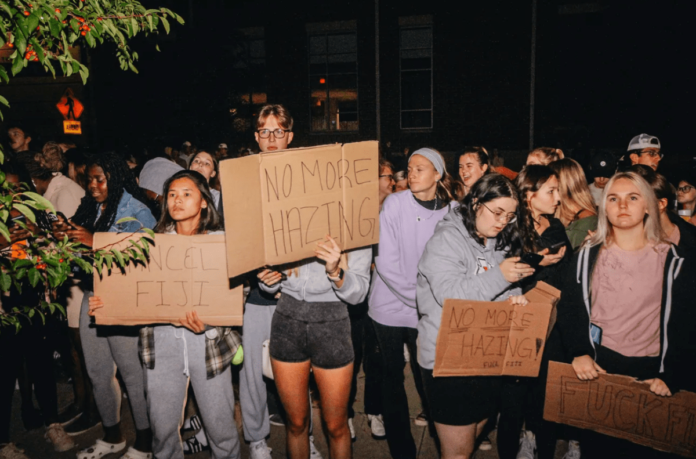
By Jackson Hare, Education and Enrichment Coordinator
Hopefully by now, you have completed the hazing awareness and prevention training newly required in accordance with Collin’s Law. Collin’s Law was passed late March shortly after Stone Foltz died as a result of a hazing incident at Bowling Green State University.
While this 34-minute-long training was incredibly essential to establish greater awareness around hazing, I felt it was lackluster, missed significant details about hazing and failed to be inclusive as it educates students about the harm hazing does.
The training goes well into detail about misconceptions about hazing, including that people often believe hazing is essential to establishing a bond with a group when this is obviously not the case. Hazing is incredibly harmful to the mental and emotional well being of those exposed to it, and it does no good in creating stronger relationships or becoming part of a team, which the training explains arguably well.
However, it does not explain any other reasons as to why hazing happens, citing only team bonding or initiation of a member. To exclude the other underlying reasons hazing occurs is to do a great disservice to those this training hopes to educate and those disproportionately affected by hazing. It fails to acknowledge the significant impact of homophobia and hypermasculinity as they relate to hazing rituals, and it neglects identity groups that may be disportionately impacted by such rituals.
I don’t doubt there are other identity groups that are disproportionately affected by hazing rituals, but I can only speak to my own experience as a gay man, in which I have experienced first hand how deeply homophobia and hypermasculinity is built into men’s groups, sports teams and the process by which you are “initiated” as a member of said teams.
The training does include mention of several examples of hazing, including group members being forced to wear clothing of the opposite sex, perform sexual acts, undress for humiliation and other examples, but it does not identify the ways in which these scenarios may disproportionately harm the mental and emotional well-being of certain groups, especially members of the LGBT+ community.
For instance, what is often considered “locker room banter” may be particularly uncomfortable for a gay athlete. That is not to say this banter isn’t inherently inappropriate, but it often aims to make specific members uncomfortable.
Speaking from my own experience participating in my high school’s cross country and track teams, I refused to use the locker rooms out of fear of homophobic comments being spouted at me and the fear of being inadvertently involved in inappropriate behavior that is encouraged by hypermasculinity, such as rough housing, comparing bodies or the classic accusations that I am “checking them out.”
This kind of experience and fear extends into hazing rituals as well. I had been aware of hazing stories, where teams would “root out” the gay kids and humiliate them. This has discouraged me from participating in certain groups or teams in the past and to this day. As I said before, I ran cross country and track, which are less known for the kind of hypermasculine behavior that I fear, unlike football, basketball and the like.
This sort of fear is for the most part unique to gay students, and it is essential to recognize this distinction between the experience of a gay student and that of a straight student.
The training fails to make this distinction, which is not only ignorant to the diversity of experiences among students, but it reinforces heteronormativity and the exclusion of LGBT+ people from the discussion of topics that disproportionately affect them.








